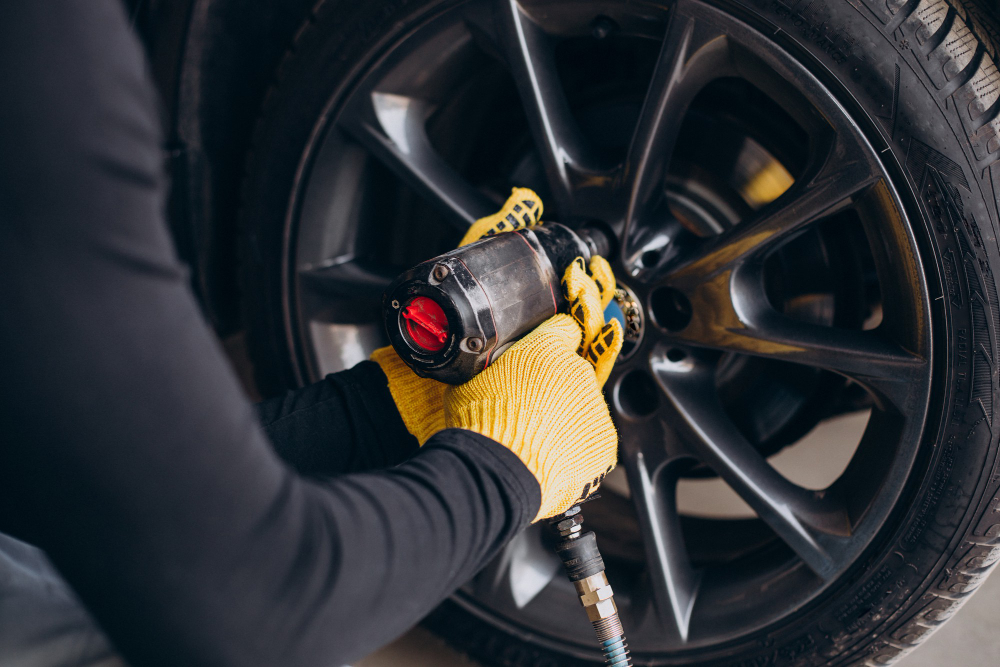Though more than a third of the vehicles manufactured in the new decade don’t come with a regular-sized spare tire, getting a flat tire can be a major setback, and a backup tire designed to be used in case of a flat or damage is an integral component of your vehicle assortment. Though this tire enables you to get back on the road, sometimes temporarily, knowing how to safely use it is important. This guide delves into the types of spare tires, safe driving practices, maintenance tips, and essential accessories to ensure you’re well-prepared for any tire-related emergencies.
Types of Spare Tires
Spare tires differ by design and purpose. Understanding the differences can help you make informed decisions when faced with a flat.
- Full-Size Spare Tires: A full-size spare matches your vehicle’s regular tires in size and specifications, providing identical performance.
Advantages:
- No speed or distance limitations.
- Can be included in regular tire rotations for even wear.
Disadvantages:
- Occupies more storage space.
- Adds extra weight to the vehicle.
- Compact Temporary Spare Tires: Commonly known as “donut” spares, these are smaller, lighter, and designed for temporary use.
Advantages:
- Space-saving design.
- Easier to handle during installation.
Disadvantages:
- Limited speed and distance capabilities.
- Reduced traction and durability.
Safe Driving Practices on a Spare Tire
Once you’ve installed your spare, it’s crucial to keep your driving in check to remain safe on the road.
Speed Limitations
When using a compact spare tire, it’s advisable not to exceed 50 mph. Exceeding this speed can compromise the tire’s integrity and your vehicle’s handling.
Distance Limitations
It’s generally recommended to drive no more than 50 miles on a compact spare. The donut spare is only meant to help you reach a repair shop where you’ll fix or replace the damaged tire.
Handling and Control
- Avoid Sudden Movements: Steer and brake gently to maintain control, as spare tires may not provide the same level of traction as regular tires.
- Disable Cruise Control: Maintain manual control of your speed to respond promptly to road conditions.
Maintenance and Care of Spare Tires
Regular maintenance of your spare tire ensures it’s ready for use when needed.
- Regular Inspections
- Check Tire Pressure: Even when not in use, spare tires can lose air pressure. Inspect them monthly to ensure they’re properly inflated.
- Examine for Damage: Look for signs of wear, cracks, or other damage that could render the spare unsafe.
- Proper Storage
- Use Spare Tire Covers: Protect your spare from environmental factors like UV rays and moisture by using covers.
Secure Mounting: Ensure the spare is firmly mounted using appropriate hardware, such as a trailer spare tire mount or a hitch spare tire carrier, to prevent movement and potential damage.
Accessories and Equipment for Spare Tires

Equipping your vehicle with the right accessories can enhance safety, convenience, and style on the road. Here is a range of accessories that will give your vehicle a boost of optimal performance and functionality:
- Spare Tire Mounts and Carriers
- Trailer Spare Tire Mounts: Ensure your trailer’s spare is securely mounted and easily accessible.
- Hitch Spare Tire Carriers: These provide a convenient method to carry a spare, especially for vehicles with limited storage space.
- Additional Accessories
- Pickup Truck Spare Tire Valve Extensions: These extensions make it easier to access and maintain proper tire pressure, especially for spares mounted in hard-to-reach areas.
Finding and Replacing Spare Tires
You ought to always know where to find and how to replace your spare tire. So:
- Locate Spare Tires Near You
Utilize local directories, automotive shops, and online resources to find spare tires and related services in your area.
- Spare Tire Kits
Arm yourself with a comprehensive spare kit always. A good kit should have a properly sized spare tire, jack, lug wrench, and any necessary mounting hardware. This will ensure you’re ready to handle tire emergencies efficiently, minimizing downtime and inconvenience.
Conclusion
Tire emergencies are inevitable on the road. Finding a suitable spare, and learning how to install and maintain it during and after use is even more imperative. That’s why we’ve taken it upon ourselves to stand in the gap between you and top-tier tire service provision. Our tire service is a seamless fusion of timeless automobile expertise and cutting-edge technology.
FAQ
How Long Can You Drive on a Spare Tire?
It depends on what kind of spare you’ve got:
- Donut (Compact Spare): These little guys are only meant for short trips—think 50 miles max. Some folks stretch it to 70, but we say play it safe and get to a tire shop ASAP.
- Full-Size Spare: These are more like your regular tires, so you can drive farther. But don’t treat it like a permanent fix—get your original tire replaced to avoid uneven wear.
How Fast Can You Go on a Spare Tire?
- Donut Spare: Keep it under 50 mph. These are thinner and smaller, not built for high-speed action.
- Full-Size Spare: You can go normal speeds, but take it easy. It’s best to swap it out sooner than later.
Going too fast on a spare—especially a donut—can mess with your suspension or differential. Not worth the risk!
How Long Does a Spare Tire Last?
It varies by type:
- Full-Size Spare: If you keep it in good shape, it can last up to 7–10 years. Just check it once in a while for cracks or wear.
- Donut Spare: These are for one-time, short-term use. If you’ve used it once or notice any damage, it’s time to replace it.
Spare tires are often forgotten, so give yours a quick check every now and then—make sure it’s holding air and ready for action when you need it.
